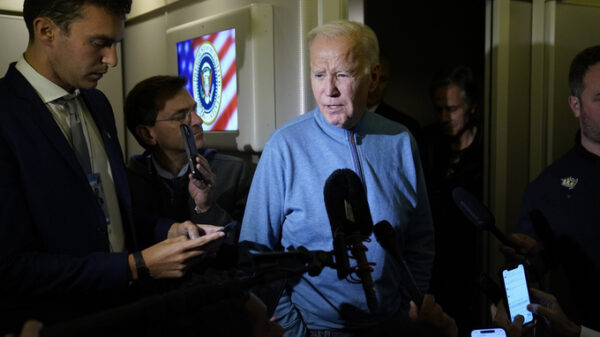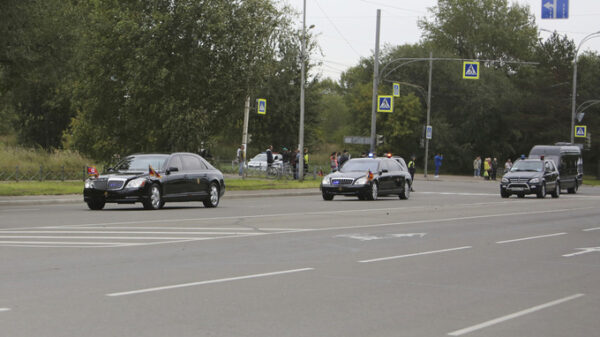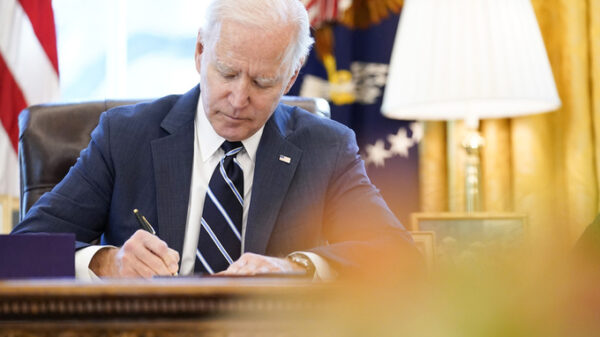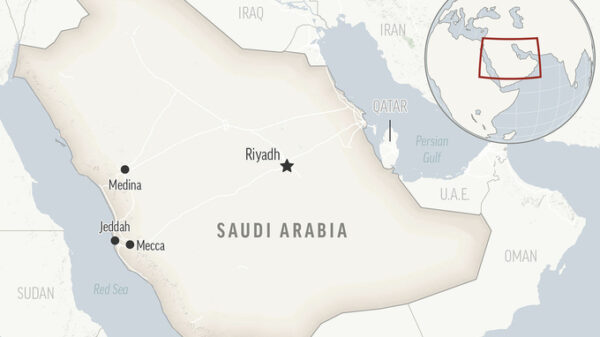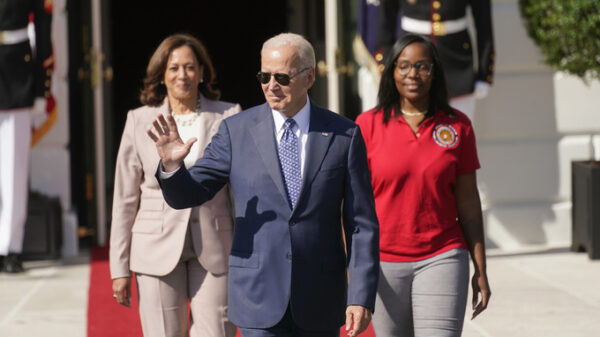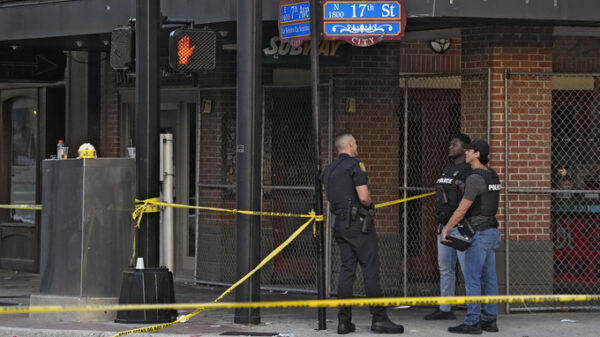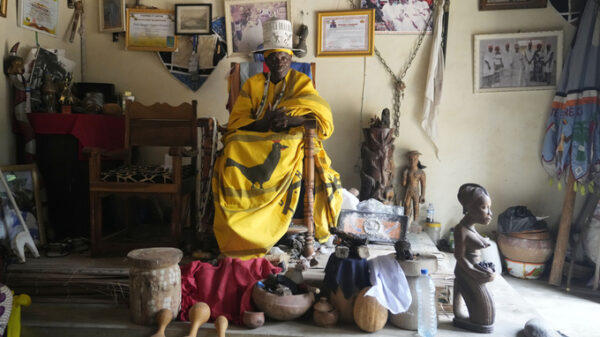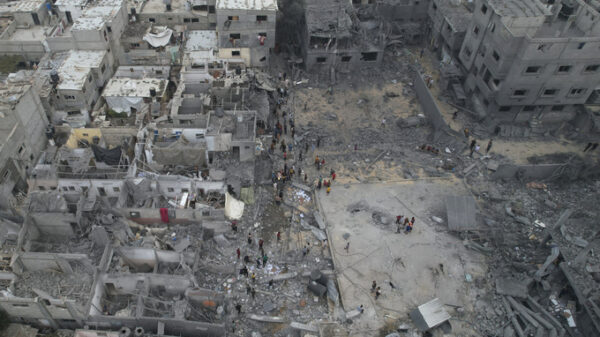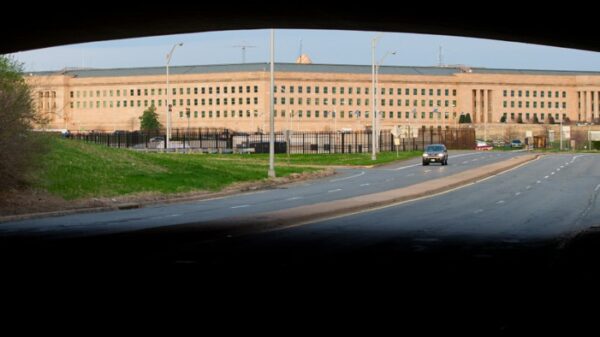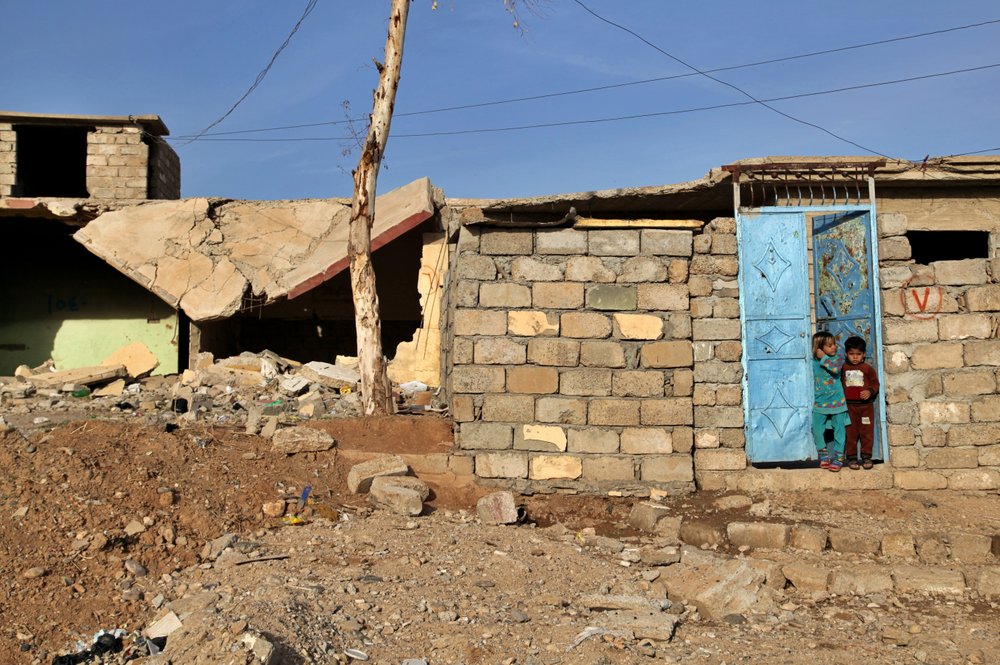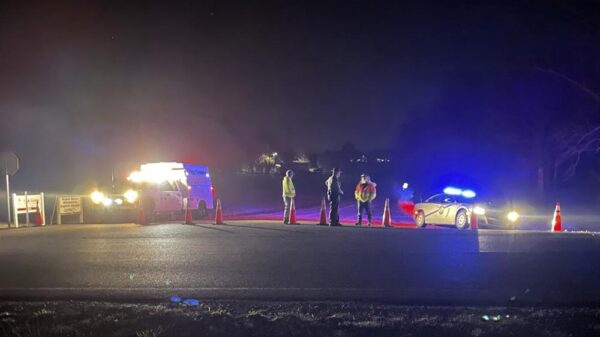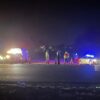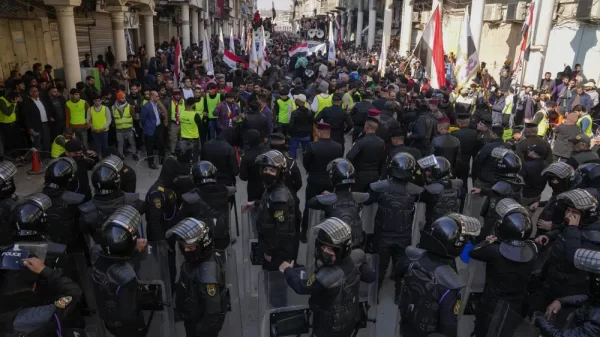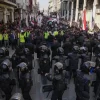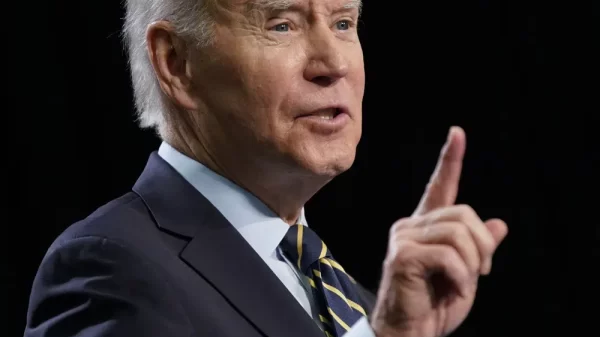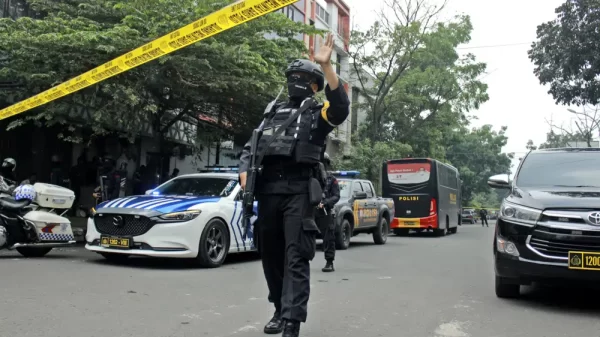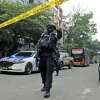Children stand outside the ruins of their home, in the Hay Tanak slum of Mosul, Iraq, Nov. 28, 2020. A push by the Iraqi government to close displacement camps by the end of the year threatens to leave tens of thousands of people homeless and without aid during a pandemic and at the onset of winter. The displaced were driven from their homes during the war against the Islamic State group and many say they cannot return because their homes were destroyed or they fear reprisal by tribes and militias. Aid groups say the haphazard implementation of the policy is fueling more displacement and resentment. (AP Photo/Samya Kullab)
DEBAJA, Iraq (AP) — After living in a camp for three years, 70-year-old Merhi Hamed Abdullah returned to his village west of the city of Mosul to find it in ruins — his first glimpse of home since Iraq defeated the Islamic State group.
To shelter his family of seven, Abdullah resurrected the tent he had hurriedly packed as the government closed Hamam Alil camp last month, forcing him and 8,500 others to return to devastated hometowns and an uncertain future.
All around Abdullah, 200 other returnee families in the remote village of Debaja followed suit. The sweeping plains are dotted with burned-out shells of broken homes and, next to them, the tents they have erected, emblazoned with the unmistakable logo of the U.N. refugee agency. Without running water or electricity, Debaja is pitch black at night. Few have steady work.
“If it were up to me, I wouldn’t have left,” Abdullah said. “It wasn’t.”
The closure of Hamam Alil camp, south of Mosul, was part of a government push to shut down all camps for internally displaced persons, or IDPs, by the end of the year. Iraq’s cash-strapped government says accelerated closures are needed to revive lagging reconstruction efforts.
Aid groups warn the rapid closings could leave tens of thousands of people homeless in winter months amid the coronavirus pandemic. Haphazard implementation, they say, threatens to create new displacement, cause informal settlements to mushroom and fuel resentments in an Iraqi society still reeling from the memories of IS’s brutal rule.
So far, at least 34,000 people have been pushed out by the closure or consolidation of 11 formal camps since mid-October. Aid groups say the number is likely higher. Another 26,000 people are still in the three remaining camps in federal Iraq slated for closure.
More than 180,000 people live in 25 other camps in the Kurdish-run northern region. It is not clear when they would face closure.
Expelled camp residents are left to live in wrecked homes or in tents, or drain savings renting in expensive urban sprawls. The most stigmatized — families affiliated with the IS group — say they have nowhere to turn.
“Pushing people out of camps might seem like ending displacement, but it doesn’t solve the crisis in terms of offering durable solutions to that displacement,” said Marine Olivesi, spokeswoman for the Norwegian Refugee Council.
Iraq’s 2014-2017 war against IS drove 6 million Iraqis from their homes, nearly 15% of the population. Over the years, many returned, and in August 2019, the Baghdad government began closing camps. It sped up the process in mid-October, when camps still held more than 240,000 people.
Nearly 75% of Hamam Alil camp’s residents said they couldn’t return because their homes were destroyed, according to a survey conducted by the NRC before the camp closed.
In Laylan camp, west of the city of Kirkuk, 7,000 IDPs were given days to pack up and leave, prompting management to scramble and prepare three month’s supply of life-saving medications.
The U.N. has raised alarm, finding that 30% of returnees are not in “safe or dignified” housing since leaving camps.
Government officials say that by pushing IDPs to return, aid groups can shift from managing camps to assisting development.
“We need them to return to rebuild their towns and villages,” said Najm Jibouri, governor of Nineveh province, where Hamam Alil is located. “Yes, they will suffer … But that doesn’t mean we should keep them in camps without a deadline.”
In an example of what some Nineveh officials hope will be replicated elsewhere, the U.N’s International Organization of Migration recently assisted IDPs in Salamiyah camp to assess the cost of repairing homes, said Azad Daoud, deputy head of the immigration department in Mosul.
Contrary to what dozens of returnees told The Associated Press, Daoud said IDPs were given a choice to remain in camps if their areas of origin were deemed unsafe.
Though Jibouri has pressed Iraq’s prime minister and the U.N. for more assistance, with temperatures dropping, many returnees said they cannot wait.
In Mosul’s Hay Tanak slum, Ghanem Khalaf, 41, inspected the trench dug with his bare hands to keep out sewage that floods his single-story home whenever it rains. His home’s exposed concrete walls have no insulation to trap warmth.
“We have to stay here, there are no other options,” said the father of five, who left Jadah Camp months ago.
As camps empty out, the government has no master plan for the most stigmatized of the residents: the wives, widows and mothers of IS members, who face discrimination and fear retribution by militias and their own tribes.
With trucks parked to collect their belongings in Laylan camp, Suha Ahmed said she cannot go back to her village south of Kirkuk.
Though she formally disavowed her IS-member husband — a procedure required for these families — her tribe has not accepted her return. She also fears the nearby checkpoint manned by Shiite militiamen.
“I don’t know where to go,” said Ahmed, who has five children, the youngest three years old.
In Nineveh, 2,000 IS-linked families are stuck in limbo. Daoud expects they will be consolidated in Jadah 5 Camp. After that he doesn’t know what will happen.
Government-led negotiations with local tribes to facilitate returns have seen some success. But other areas remain out of reach.
In the town of Sinjar, painful memories are still fresh of IS militants destroying Yazidi villages, lining up men to be shot and enslaving thousands of women.
Suhad Daoud, who survived IS horrors, said she will never accept the return of Sunni Arab families.
“We reject those families living among us again. They betrayed us,” she said.
Sheikh Mohammed Ibrahim, a Sunni tribal leader in Khailo village, south of Sinjar, said even IS members’ children were forbidden from returning.
“Anyone whose family member was killed will want revenge by blood,” he said. “We don’t want them back, we don’t want to see them, be they men, women or children.”
Despite these sharp objections, the government is committed to closing all camps.
“If these families stay in camps, we will breed a new generation of IS in Iraq,” said Jibouri, the governor. “They need to mix with the people … They need to change their minds.”
Copyright 2020 Associated Press. All rights reserved.

